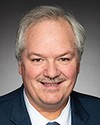Thank you, Mr. Chair.
Dr. Lennox and Dr. Nicolaidis, welcome to the committee.
For the benefit of our study, I wanted the committee to hear from practitioners who advance different positions in the scientific literature. Today, two of the witnesses we wanted to hear from turned down the committee's invitation.
Dr. Lennox and Dr. Nicolaidis, I don't say this often—I'm not trying to brag—but as a bioethicist, I want to say what a credit you both are to your profession.
On one hand, Dr. Lennox, you told us that you have experience with a registry. I looked through all your material, and I think you have a lot to teach us on how things should be done. The information you provided is fantastic.
On the other hand, Dr. Nicolaidis, in an environment where the industry has been all-knowing and all-powerful for the past 60 years, your position speaks to your incredible courage.
That said, I'd like your opinion on what we heard from Health Canada officials last week. It's a bit of the chicken and egg paradox. They said that there wasn't enough research on the safety or the adverse impacts such as lymphoma to be proactive and introduce a registry. Today, you're telling us that, had there been a registry 20 years ago, we would obviously have more data, and it would be much easier to prove whether or not these devices were safe.
I imagine you agree with that, but you tell me. Dr. Nicolaidis, why does Health Canada not recognize breast implant illness?




